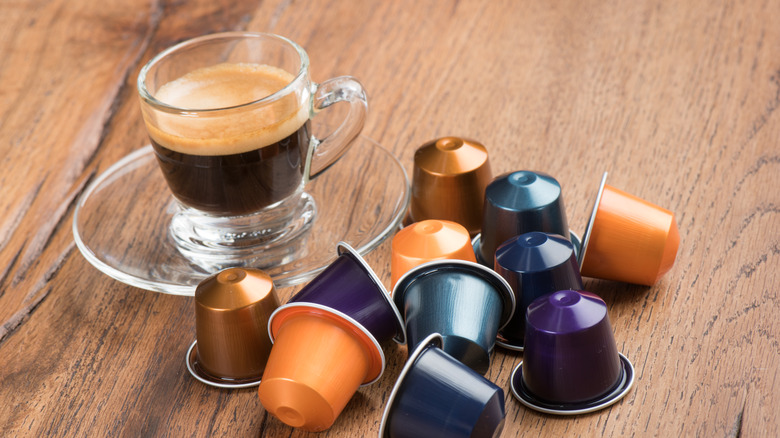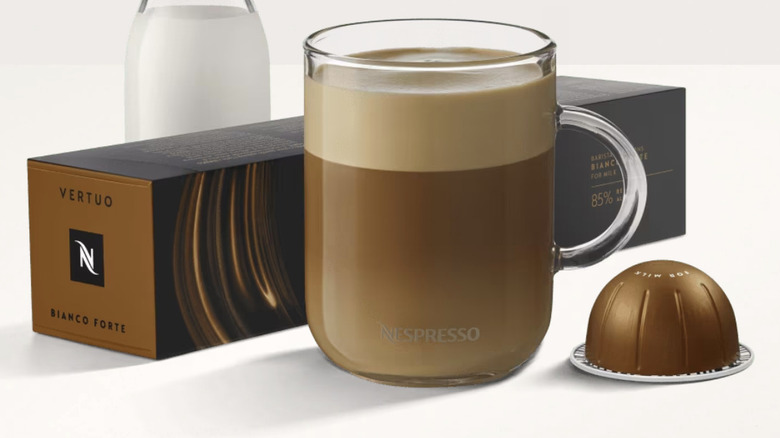How Nespresso Pioneered The World Of Coffee Capsules
With multiple companies shelling out countless coffee capsules every year, it's hard to imagine a world where they didn't exist. From Nespresso to Keurig, Nestle, Dunkin', Starbucks, and various branded offshoots, button-pressing our morning brew is easier than ever. But in reality, those handy little aluminum coffee cradlers have only been around since the mid-1980s, when an enterprising Nestlé employee finally persuaded the company to make his dream a reality. About 10 years of conception, sampling, development, and persuasion resulted in the now-famous Nespresso capsules and machines embraced by coffee consumers across the globe.
The man behind the drive for a perfect frothy espresso was Eric Favre, an inventor and engineer from Switzerland, the home base for the Nestlé conglomerate now operating in 188 countries. As the saying goes, great things come from great ideas, and coffee capsules are no exception. However, the idea wasn't a preconceived notion, more like one that bubbled and brewed inside Favre's creative consciousness while pursuing the perfect espresso.
Similar to another famous coffee pioneer, namely Starbucks founder Howard Schultz, Favre's journey began with a tromp through the coffee bars of Italy. The defining sojourn, undertaken with his Italian wife, preceded Schultz's exploration by about eight years, and the focus for Favre was more on coffee perfection through science than on the romance, ritual, and community aspects of daily consumption.
The journey, science, and progression of coffee capsules
As the story goes, Eric Favre, the Nespresso inventor and its eventual CEO, invited his wife, Anna Maria, on an Italian culinary journey in 1975. The goal was to taste-test as many espresso drinks in Italy as necessary to uncover the core secrets of what makes the perfect espresso pull. They finally zeroed in on a lively spot in Rome called Caffè Sant'Eustachio, engaging with barista Eugenio to pinpoint the crucial elements involved, primarily air.
Realizing how the introduction of air into the espresso process informs coffee aromas and, therefore, the final result, he came up with a "monodose" closed-system concept of entrapping air and ground coffee inside a small capsule, then forcing water through it to create a frothy espresso straight into a waiting cup. Nestlé eventually embraced the concept with a separate Nespresso division, making Favre its CEO, according to Monodor, or Mocoffee, the company Favre later created to further explore monodose capsules.
Nespresso made a gamble on coffee capsules that impacted home coffee brewing in a big way, but they didn't stop there. The company's Centrifusion extraction technology now fuels its Vertuo line, which has its own machines using larger round pods carrying bar codes in their metal rims. Once you pop one into the machine, it reads the code, spins the pod with as many as 7000 rotations per minute, and produces the appropriate amount of water and pressure to make either coffee or espresso.

